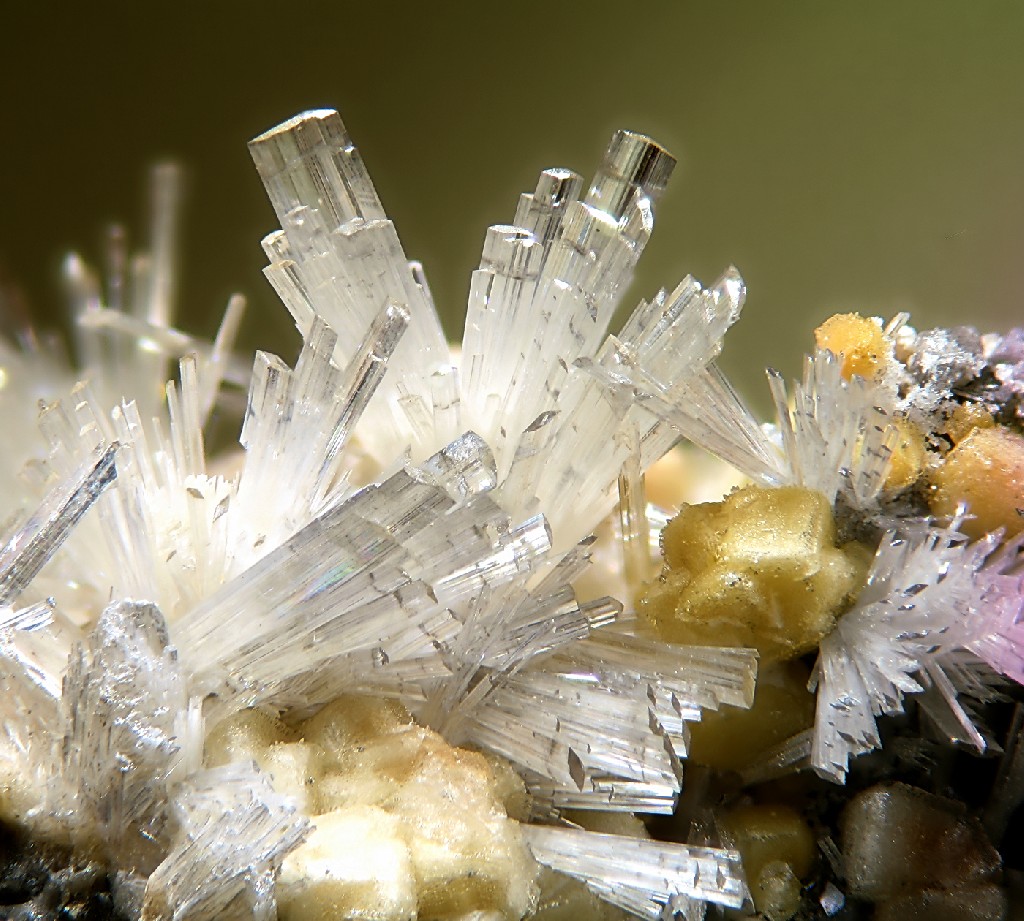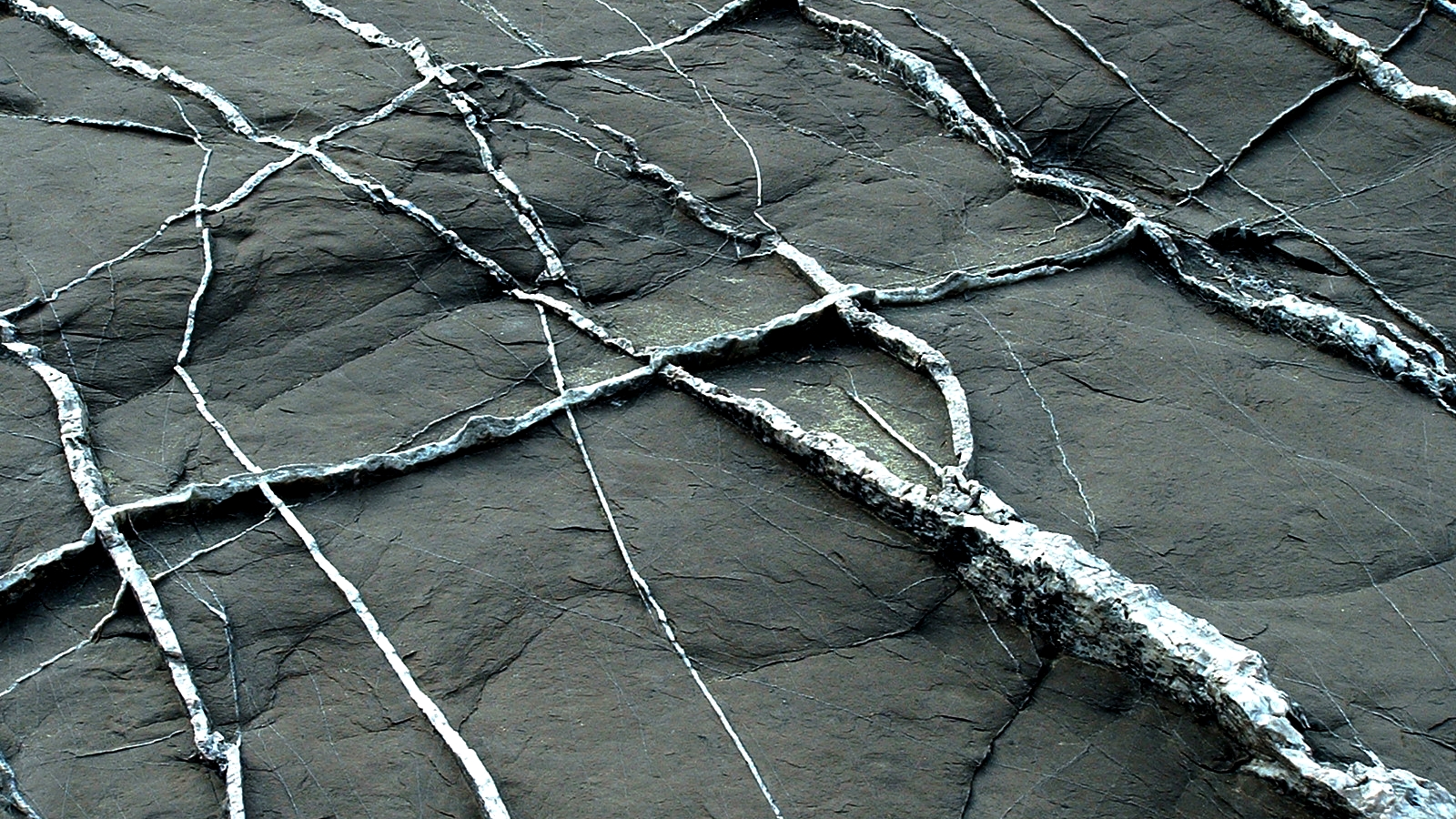|
Valentinite
Valentinite is an Antimony trioxide, antimony oxide mineral with formula antimony, Sb2oxygen, O3. Valentinite crystallizes in the orthorhombic system and typically forms as radiating clusters of euhedral crystals or as fibrous masses. It is colorless to white with occasional shades or tints of yellow and red. It has a Mohs hardness of 2.5 to 3 and a specific gravity of 5.76.Pradyot Patnaik. ''Handbook of Inorganic Chemicals''. McGraw-Hill, 2002, Valentinite occurs as a weathering product of stibnite and other antimony minerals. It is dimorphous with the Cubic (crystal system), isometric antimony oxide senarmontite. Historical data Valentinite is a mineral named in the middle of the 19th century in honour of Basilius Valentinus, a writer on alchemy. He is the supposed author of the first book to give a detailed description of antimony and its compounds. From the contents of the book it is also obvious that Valentinus was familiar with the synthetic preparation of antimony trioxide ... [...More Info...] [...Related Items...] OR: [Wikipedia] [Google] [Baidu] |
Oxide Minerals
The oxide mineral class includes those minerals in which the oxide anion (O2−) is bonded to one or more metal alloys. The hydroxide-bearing minerals are typically included in the oxide class. Minerals with complex anion groups such as the Silicate mineral, silicates, Sulfate mineral, sulfates, carbonate mineral, carbonates and Phosphate mineral, phosphates are classed separately. Simple oxides *XO form **Periclase group ***Periclase ***Manganosite **Zincite group ***Zincite ***Bromellite ***Tenorite ***Litharge * form **Cuprite **Ice * form **Hematite group ***Corundum ***Hematite ***Ilmenite * form **Rutile group ***Rutile ***Pyrolusite ***Cassiterite **Baddeleyite **Uraninite **Thorianite * form **Spinel group ***Spinel ***Gahnite ***Magnetite ***Franklinite ***Chromite **Chrysoberyl **Columbite *Hydroxide subgroup: **Brucite **Manganite **Romanèchite **Goethite group: ***Diaspore ***Goethite Nickel–Strunz class 4: oxides Internationa ... [...More Info...] [...Related Items...] OR: [Wikipedia] [Google] [Baidu] |
Cervantite
Cervantite, also formerly known as '' antimony ochre'''' James Dwight Dana A. M., Brush G. J.'' A system of mineralogy : Descriptive mineralogy, comprising the most recent discoveries. — New York : J. Wiley & Sons, 1884. — is an antimony oxide mineral with formula Sb3+Sb5+O4 ( antimony tetroxide). It was first described in 1850 for an occurrence in Cervantes, Galicia, Spain, and named for the locality. The mineral was questioned and disapproved, but re-approved and verified in 1962 based on material from the Zajaca-Stolice district, Brasina, Serbia. It occurs as a secondary alteration product of antimony bearing minerals, mainly stibnite Stibnite, sometimes called antimonite, is a sulfide mineral, a mineral form of antimony trisulfide ( Sb2 S3). It is a soft, metallic grey crystalline solid with an orthorhombic space group. It is the most important source for the metalloid an .... References Antimony minerals Oxide minerals Orthorhombic minerals Minerals in s ... [...More Info...] [...Related Items...] OR: [Wikipedia] [Google] [Baidu] |
Antimony Trioxide
Antimony(III) oxide is the inorganic compound with the formula Sb2O3. It is the most important commercial compound of antimony. It is found in nature as the minerals valentinite and senarmontite. Like most polymeric oxides, Sb2O3 dissolves in aqueous solutions with hydrolysis. A mixed arsenic-antimony oxide occurs in nature as the very rare mineral stibioclaudetite. Production and properties Global production of antimony(III) oxide in 2012 was 130,000 tonnes, an increase from 112,600 tonnes in 2002. China produces the largest share followed by US/Mexico, Europe, Japan and South Africa and other countries (2%). As of 2010, antimony(III) oxide was produced at four sites in the EU. It is produced via two routes, re-volatilizing of crude antimony(III) oxide and by oxidation of antimony metal. Oxidation of antimony metal dominates in Europe. Several processes for the production of crude antimony(III) oxide or metallic antimony from virgin material. The choice of process depends on ... [...More Info...] [...Related Items...] OR: [Wikipedia] [Google] [Baidu] |
Kermesite
Kermesite or antimony oxysulfide is also known as red antimony or ''purpur blende'' (Sb2S2O) . The mineral's color ranges from cherry red to a dark red to a black. Kermesite is the result of partial oxidation between stibnite (Sb2S3) and other antimony oxides such as valentinite (Sb2O3) or stibiconite (Sb3O6(OH)). Under certain conditions with oxygenated fluids the transformation of all sulfur to oxygen would occur but kermesite occurs when that transformation is halted. Mining and specimens Deposits of this mineral have been found all over the world, however notable deposits have been found in Braunsdorf, near Freiberg, Saxony, Germany; Pernek, Pezinok, and Pribram, Czechoslovakia; the Lac Nicolet mine, South Ham Township, Wolfe County, Quebec, Canada; Sombrerete, Zacatecas, Mexico; Santa Cruz and San Francisco mines, Poopo, Oruro, Bolivia; Que Que, Zimbabwe; Djebel Haminate, Algeria; Broken Hill, New South Wales, Australia; Mohave, Kern County, California and Burke, Shoshon ... [...More Info...] [...Related Items...] OR: [Wikipedia] [Google] [Baidu] |
Stibiconite
Stibiconite, also formerly known as '' stiblite''''Robert Philips Greg, William Garrow Lettsom'' (1858). Manual of the Mineralogy of Great Britain & Ireland. — London: John Van Voorst, 1858. or '' antimony ochre''Bulletin of the United States National Museum. Published under the Direction of the Smithsonian Institution. Washington: Government Printing Office, No.32, 1887. is an antimony oxide mineral with formula: Sb3O6(OH). Its name originates from Greek (), 'antimony' and (), 'powder', alluding to its composition and habit. It is a member of the pyrochlore super group. Discovery and occurrence It was first described in 1862 for an occurrence in the Brandholz – Goldkronach District, Fichtel Mountains, Bavaria, Germany. It occurs as a secondary alteration product of other hydrothermal antimony minerals such as stibnite. It occurs in association with cervantite, valentinite, kermesite, native antimony Native antimony is a mineral belonging to the group of native elemen ... [...More Info...] [...Related Items...] OR: [Wikipedia] [Google] [Baidu] |
Oxidation
Redox ( , , reduction–oxidation or oxidation–reduction) is a type of chemical reaction in which the oxidation states of the reactants change. Oxidation is the loss of electrons or an increase in the oxidation state, while reduction is the gain of electrons or a decrease in the oxidation state. The oxidation and reduction processes occur simultaneously in the chemical reaction. There are two classes of redox reactions: * Electron-transfer – Only one (usually) electron flows from the atom, ion, or molecule being oxidized to the atom, ion, or molecule that is reduced. This type of redox reaction is often discussed in terms of redox couples and electrode potentials. * Atom transfer – An atom transfers from one substrate to another. For example, in the rusting of iron, the oxidation state of iron atoms increases as the iron converts to an oxide, and simultaneously, the oxidation state of oxygen decreases as it accepts electrons released by the iron. Although oxidati ... [...More Info...] [...Related Items...] OR: [Wikipedia] [Google] [Baidu] |
Hydrothermal
Hydrothermal circulation in its most general sense is the circulation of hot water (Ancient Greek ὕδωρ, ''water'',Liddell, H.G. & Scott, R. (1940). ''A Greek-English Lexicon. revised and augmented throughout by Sir Henry Stuart Jones. with the assistance of. Roderick McKenzie.'' Oxford: Clarendon Press. and θέρμη, ''heat'' ). Hydrothermal circulation occurs most often in the vicinity of sources of heat within the Earth's crust. In general, this occurs near volcanic activity, but can occur in the shallow to mid crust along deeply penetrating fault irregularities or in the deep crust related to the intrusion of granite, or as the result of orogeny or metamorphism. Hydrothermal circulation often results in hydrothermal mineral deposits. Seafloor hydrothermal circulation Hydrothermal circulation in the oceans is the passage of the water through mid-oceanic ridge systems. The term includes both the circulation of the well-known, high-temperature vent waters near the ridge c ... [...More Info...] [...Related Items...] OR: [Wikipedia] [Google] [Baidu] |
Galena
Galena, also called lead glance, is the natural mineral form of lead(II) sulfide (PbS). It is the most important ore of lead and an important source of silver. Galena is one of the most abundant and widely distributed sulfide minerals. It crystallizes in the Cubic (crystal system), cubic crystal system often showing octahedral forms. It is often associated with the minerals sphalerite, calcite and fluorite. As a pure specimen held in the hand, under standard temperature and pressure, galena is insoluble in water and so is almost non-toxic. Handling galena under these specific conditions (such as in a museum or as part of geology instruction) poses practically no risk; however, as lead(II) sulfide is reasonably reactive in a variety of environments, it can be highly toxic if swallowed or inhaled, particularly under prolonged or repeated exposure. Occurrence Galena is the main ore of lead, used since ancient times, since lead can be smelted from galena in an ordinary wood fire. G ... [...More Info...] [...Related Items...] OR: [Wikipedia] [Google] [Baidu] |
Vein (geology)
In geology, a vein is a distinct sheetlike body of crystallized minerals within a rock. Veins form when mineral constituents carried by an aqueous solution within the rock mass are deposited through precipitation. The hydraulic flow involved is usually due to hydrothermal circulation. Veins are classically thought of as being planar fractures in rocks, with the crystal growth occurring normal to the walls of the cavity, and the crystal protruding into open space. This certainly is the method for the formation of some veins. However, it is rare in geology for significant open space to remain open in large volumes of rock, especially several kilometers below the surface. Thus, there are two main mechanisms considered likely for the formation of veins: ''open-space filling'' and ''crack-seal growth''. Open space filling Open space filling is the hallmark of epithermal vein systems, such as a stockwork, in greisens or in certain skarn environments. For open space fillin ... [...More Info...] [...Related Items...] OR: [Wikipedia] [Google] [Baidu] |
Bohemia
Bohemia ( ; ; ) is the westernmost and largest historical region of the Czech Republic. In a narrow, geographic sense, it roughly encompasses the territories of present-day Czechia that fall within the Elbe River's drainage basin, but historically it could also refer to a wider area consisting of the Lands of the Bohemian Crown ruled by the List of Bohemian monarchs, Bohemian kings, including Moravia and Czech Silesia, in which case the smaller region is referred to as Bohemia Proper as a means of distinction. Bohemia became a part of Great Moravia, and then an independent principality, which became a Kingdom of Bohemia, kingdom in the Holy Roman Empire. This subsequently became a part of the Habsburg monarchy and the Austrian Empire. After World War I and the establishment of an History of Czechoslovakia (1918–1938), independent Czechoslovak state, the whole of Bohemia became a part of Czechoslovakia, defying claims of the German-speaking inhabitants that regions with German ... [...More Info...] [...Related Items...] OR: [Wikipedia] [Google] [Baidu] |
Příbram
Příbram (; or ''Przibram'') is a town in the Central Bohemian Region of the Czech Republic. It has about 33,000 inhabitants. It is known for its mining history, and more recently, its new venture into economic restructuring. The town is the third-largest in the Central Bohemian Region (behind Kladno and Mladá Boleslav), and is a natural administrative and cultural centre of the south-western part of the region, although it also tends to be largely influenced by the proximity of Prague. The Svatá Hora pilgrimage site above the town is the oldest and most important Marian pilgrimage site in Bohemia. Příbram is also known for the Mining Museum Příbram. Administrative division Příbram consists of 18 municipal parts (in brackets population according to the 2021 census): *Příbram I (2,461) *Příbram II (2,088) *Příbram III (3,486) *Příbram IV (1,650) *Příbram V-Zdaboř (3,919) *Březové Hory, Příbram VI-Březové Hory (1,704) *Příbram VII (10,135) *Příbram ... [...More Info...] [...Related Items...] OR: [Wikipedia] [Google] [Baidu] |








